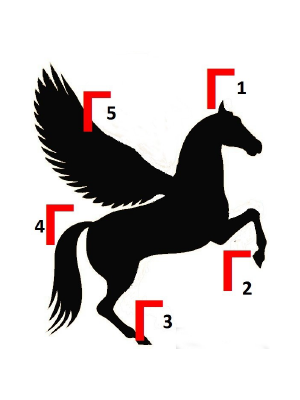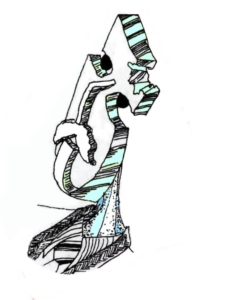Sound: [q]
Signifying: [a phenomenon/organ] sprouting out of main body
[q] sound in Türki is equal to the sound of hard [g] as in ‘girl’ and ‘go’ in English.
Place of articulation: back of tongue pressing against soft palate
manner of articulation: stop/plosive
The significance of the sound [q]
This sound could be considered as one of the first four prominent stop sounds as found in the first phonetic alphabet of Ugarit (around 1400 BCE [3400 years ago]). Theoretically it conveys some complex but prominent concept. The order with Ugarit alphabet continued with Greek alphabet and Arabic alphabet. In Ugarit alphabet the letter _standing for the sound [q]_ is called gimel meaning ‘camel’ which is called ‘jəməl’ in Arabic. So, in Arabic alphabet the letter ج (for the sound [j]) replaces the sound [γ].
Our studies show that the early sounds were of semiotic value. Therefore, we use signify (instead of sign) for the sounds. Therefore, the semiotic value of the stop sound [q] is to signify ‘a phenomenon which sprouts out of main body’.
Graphic figure as a sign (icon)
Graphic shape of the sound [q] in Greek alphabet (as an icon [primary level of signs] in semotics) shows the same presumed signification with the sound ‘a phenomenon which sprouts out of main body’:
This graphic icon comprises a vertical main body corpus:
![]()
And a sprouting out horizontal branch:
![]()
Shape of Γ in its sign-signify value:
![]()
This graphic shape as a signifier signifies the concept of ‘[an organ/phenomenon] sprouting out [of] main body’.
Even the lower case of the letter γ shows sprouting elements out of main body.
Examples:
Body organs sprouting out of main body:

1. Qulaq (ear), 2. Qol (arm), 3. Qıç (leg), 4. Quyruq (tail), 5. Qanad (wing)
